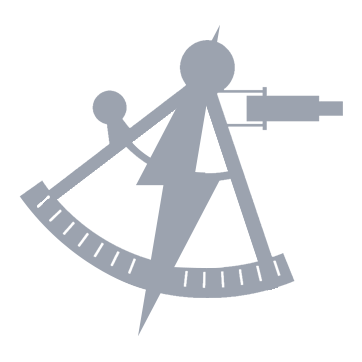Using her main phaser arrays, it had taken the Arcturus almost three hours to cut the trench. Through a dozen meters of ice and another dozen meters of ruined cityscape and frozen topsoil, the ship burned a circle two kilometers down to the bedrock on the surface of Eta Torrensis IV. At the center was a massive, ancient structure of the long-dead Velar. Their fate and history were lost to the sands of time, other than the message Lieutenant Galan was able to decipher on the surface of the probe recovered from Thalruatania: massive global cooling had caused them to cry out across space for help. It was unclear if that help ever came, though, as life on Eta Torrensis IV was now limited to the hardiest of plant life, lichens, and microbes. Once Class-M or Class-O, it had frozen over to a Class-P wasteland, with temperatures hovering just at freezing during the day and plummeting to -20 degrees Celsius at night.
How the Tkon influenced the Velar was also unknown–and irrelevant for their current mission–but it was clear that Tkon technology had formed part of the probe, thus why Omega had been attracted to it in the first place. It had taken nearly two days of orbital scans, but Captain Lancaster was now sure that the beacon he had been ordered to find and reactivate was at the center of the circle he’d ordered branded into the planet’s surface.
Lancaster had ensconced himself in the lower section of the main bridge, often used as a conference room but which also had full command and control abilities of the entire ship. Even as cargo shuttles lifted off of the hanger deck en route to begin the next phase of the mission, Lancaster used the holographic controls to reorient the ship. The wispy clouds beyond the viewport shifted rapidly as the ship dove in response to his commands to point the Arcturus directly at the planet’s surface.
“Set main phasers to wide-area mode and configure for two percent power, compensating for atmospheric attenuation,” the captain ordered.
“Confirmed,” the computer reported.
The captain tapped in the remainder of the firing sequence himself, targetting the area now bounded by the trench. This task would be quicker than the tedious digging they’d done before, but it would be much more spectacular. Or it would have been, had anything happened when he finalized the command.
“The emergency manual override has been triggered. Phasers are offline.”
“Clarify. Who triggered the override and for what purpose?”
“The override was triggered by Commander Seth Galbraith in Auxiliary Fire Control. Reason cited: imminent danger to cultural artifacts.”
As the ship was not at red alert, the computer would accept input from any command-grade officer to halt any process that might be dangerous from an override station. Still, it was highly unusual not to follow up with a direct report. Lancaster had a flash of anger, seeing red at the prospect of one of his officers countermanding him during such a critical mission. He hadn’t interacted with Galbraith much, but he was a bleeding heart if there ever was one. Most archaeology wasn’t conducted by phaser bank, but Lancaster didn’t have time to get out a toothbrush to sift through the ruins of this planet.
“Lancaster to Galbraith. Report to the bridge,” Lancaster said.
There was no response. Lancaster turned to Lieutenant Commander Evandrion, the ship’s Deltan security chief standing by to relay orders to the hazard teams.
“Reset the override and bring him here. Now,” the captain ordered, gritting his teeth.
The captain paced for several minutes after Evandrion left before the computer chirped to indicate that the ship’s weapons were now fully available. Once he’d hit ‘Fire,’ a cone of golden phaser energy sprung out of the ventral phaser array under the engineering hull, making content with the ice on the planets second. It went from solid one moment before sublimating into vapor in an instant, liberating the ruins from the icy tomb they’d been trapped in for tens of thousands of years.
“Reading some minor structural collapses, but nothing we weren’t expecting,” Lieutenant Commander van Dorland reported from one of the aft-facing computer terminals.
“Good. I want you headed down to set up our beachhead,” Lancaster replied, turning to look at his friend.
The crew of the Arcturus was large enough that there were multiple layers between Lancaster and his old academy roommate, which let them remain friends without impropriety. For this most important and hopefully last stage of the mission to deal with Omega, though, he’d surrounded himself with the people he trusted the most. Case in point, Galbraith’s mutiny.
Van Dorland led the ship’s embarked Starfleet Corps of Engineers team, a group of thirty officers and NCOs who specialized in construction and repair tasks. The intention was for them to handle jobs like setting up communications relays or repairing other Starfleet ships, but now what Lancaster needed them for was to break into a long-dead civilization’s most important museum.
The blond commander nodded. “The Da Jiao is ready. We’ll be able to compensate for the transporter interference within a few hours.”
“Making this quite possibly the only time that a diplomatic launch will serve a useful function,” Lancaster quipped.
As if her copious complement of support vessels weren’t already complete enough with an embarked light escort and a hangar full of shuttles and runabouts, the Arcturus also had a “diplomatic launch” docked just behind the planetary sensor dome. Upscaled and improved from the design of captain’s yacht used aboard the Galaxy and Nebula classes, this ungainly barge was meant to transport dignitaries in luxury or to meet the personal recreational needs of the embarked flag officer.
Luckily, Admiral Hayden was just as disdainful of its presence as Lancaster was, so she’d been more than happy to let van Dorland’s team retrofit it to serve as a makeshift command-and-control center for their expedition to the surface. Now equipped with a full-size transporter room, it would be able to link back to the Arcturus and cut through the interference from the planet’s richly metallic crust that kept them from beaming down in the first place. There was no getting around using cargo shuttles to bring the rest of their bulky equipment down, though.
“What are you going to do with Galbraith?” the engineer asked.
“I think keel-hauling is the traditional punishment.’
“A starship doesn’t have a keel,” van Dorland reminded him.
“Radial structural member-hauling doesn’t have the same verbal impact,” Lancaster noted. “Confined to quarters.”
Van Dorland nodded. “Hopefully, whatever we’re doing will be over soon. It’s not easy to follow orders when we don’t know what’s happening,” the commander reminded him.
“Get the Da Jiao down to the surface. We’re in the final stage, but it’s not over yet.”
Lancaster turned back to the controls as the engineer left. He’d just returned control of the ship to the stations on the main bridge when he heard footsteps on the stairs leading down from deck one proper. Commander Galbraith was led by the elbows, Lieutenant Commander Evandrion on one side, and his deputy, Lieutenant Commander Osokin, on the other side.
“Explain yourself,” Lancaster ordered, staring the Canadian science officer in the eyes.
“You’re insane. You’ve destroyed incalculably valuable archaeological evidence. That violates a hundred different Starfleet regulations and Federation laws!” Galbraith exclaimed. “No secret directive can give you the authority to–”
“It can and does, Commander. And doesn’t that explain to you how serious this situation is?” Lancaster asked, trying to stay patient.
”No. You’ve obviously gone off the deep end, and you had to be stopped.”
“You’re confined to quarters until further notice,” the captain replied, waving his hand towards the security officers.
“I want to see the Admiral!”
“You will, at your court-martial for insubordination, mutiny, and treason,” Lancaster replied coldly.
“Treason?! You have to be kidding me,” the scientist replied, eyes wide.
As Galbraith was led away, he struggled slightly against Evandrion and Osokin, which just made the captain angrier. If he was willing to interfere with the ship’s operations, he should have been willing to take the punishment for it.
“Mister Evandrion, I’ve changed my mind,” Lancaster said.
The three men looked back at him, and Galbraith looked momentarily hopeful.
“Throw him in the brig.”

 Bravo Fleet
Bravo Fleet






